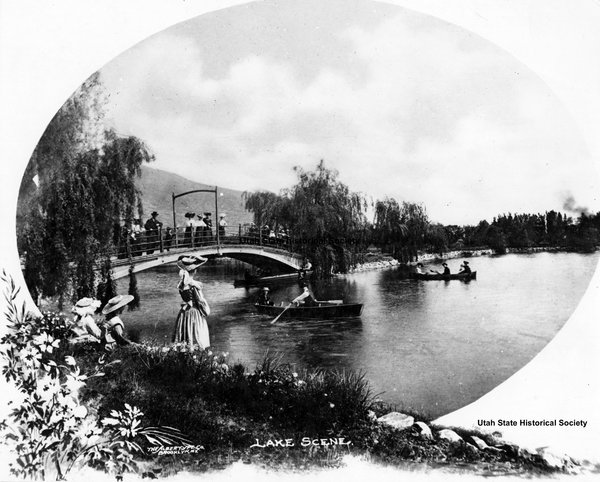Dublin Core
Title
Description
In the late nineteenth century -- before TV, massive roller coasters, or video games -- one of America’s favorite pastimes was going to parks. These leisure resorts often used water features like ponds to attract picnickers. As technology changed over time only some remained. One of the oldest of these leisure parks is still here in Utah, with its name a reminder of its watery origins.
Lagoon was originally founded as Lake Park in 1886 on the shores of Great Salt Lake. A rival of the famous Great Saltair, Lake Park featured swimming and dance hall activities until the lake receded away. Its new location would be called Lagoon for its freshwater attractions at the base of the mountains in nearby Farmington. Davis County businessman Simon Bamberger financed the relocation in 1899, and conveniently extended his own railroad to include a stop at Lagoon. To achieve this oasis in Farmington, construction crews manually formed two large ponds. In the process, they found the swampy land was full of frogs, which they harvested and sold to mining camps in Montana, where frog meat was considered a delicacy.
Lagoon quickly became one of Utah’s most popular pleasure resorts. Its rivalry with Saltair nearly shut the other amusement park down, since Lagoon held big band dances, bike rides, battleship reenactments, and even some of the first-ever movies shown in Utah. Of course what made Lagoon most popular in the end was its famous water, which they touted as “fit enough to drink,” unlike the noxious, salty Great Salt Lake. Lagoon’s pool was the first filtered water pool West of the Mississippi, and eventually expanded to include an artificial river and water slides.
Bathing parks and leisure resorts were once everywhere, but Lagoon is one of the few to survive to our time. One factor was how the park embraced amusement rides -- such as the White Roller Coaster built in 1921 -- to bring them into the 20th century. This, in addition to hosting famous musicians from the Beach Boys to Jimi Hendrix, goes to show that today, the best amusement parks in the West are about a lot more than water.
Creator
Source
Image: Lake scene at Lagoon Park, c. 1920. As the needs of Americans progressed through the 20th century, Lagoon changed from a leisurely pond to the amusement park we know today. Lagoon was also a place for everyone. One park manager, Robert E. Freed, was a Civil Rights activist who ignored local segregation laws and allowed African American swimmers to enjoy Lagoon alongside white visitors in the 1960s. Courtesy Salt Lake Tribune Collection, Utah State Historical Society.
_______________

